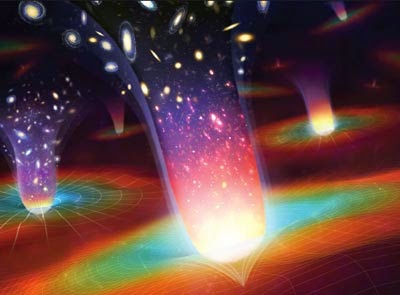Kindly allow me to propose that this video may be easier to understand, provided that the following items are highlighted:
0-D: Just a point. No width, no height, no depth, no duration.
1-D: A line. No height, no depth, no duration.
2-D: A plane. No depth, no duration (ie a square)
3-D: A space. No duration (ie a cube)
4-D: A timeline or world line — imagine a Minkowski space and/or a tesseract / hypercube. Many frames of space make a world line. Consider the timeline which we are on, as things are unfolding every second — a simple example would be picking up an apple.
5-D: 2 timelines — contemplate an alternate timeline in which some type of other outcome is possible in our given timeline, such as picking up two apples, or an orange, or something completely different. Thus, a "probability plane" of 2 timelines is visualized in 5-D, given that not all 4-D timelines pass thru' every possible 3-D frame.
6-D: What to jump through to get from one timeline to another. Think about a timeline where things can happen in our universe, but can not exist from our current position in time, such as a time when dinosaurs were still alive, and the outcomes leading up to the present day is completely changed by this event. Since we can't technically cross to this timeline because we know that dinosaurs are extinct in our timeline, this concept of "folding" of two timelines allows for a path to the impossible. Τhis creates a "probability plane", ie a phase space where we can freely move to any given timeline within our universe with its unique set of laws of physics. From an outsider's point of view afar, this phase space looks like a point containing every possibility in our universe. Therefore, many "probability planes" make a phase space representing all possible outcomes for a unique universe such as ours!
7-D: So far we've been thinking about a universe of possibilities with the same initial conditions, ie the same big bang. But what if the starting conditions were different? Such a universe couldn't feature in the 6-D phase space of this universe, so there must be another dimension. In the 7th dimension, our universe, with all its myriad possibilities and probabilities, is effectively reduced to a single point. And a phase space containing all the possibilities that could occur from different starting conditions in another universe would be a second point. Join the two and you have a line in the 7th dimension.
8-D: Why do we need an 8th dimension? Because there will always be universes that are not included along any 7-D line that we can draw. The 8th dimension, like the 2nd and 5th before it, defines a plane on which lines can co-exist and is the true or ultimate multiverse, containing every single possibility, at every single moment, in every single universe both imaginable and unimaginable. Conveniently, this also explains why we exist — because there has to be a universe in which we do — and why, anyway, there is something rather than nothing, because the multiverse represents both!
9-D: From the standpoint of 8-D, the 9-D is what one would "jump through" to instantaneously move from one position to another, or to get from one universe to another, i.e. to jump "through 9-D" to a completely different 8-D "phase plane". This is a similar concept to 6-D, where every possible probability is considered, because we are now changing all kinds of constants to the point where these universes might look drastically more different than ours. Thus, many "phase planes" make a 9-D information space. We are now beyond the physical, dealing only with information patterns that describe general tendencies towards one kind of existence over another, or even patterns that cannot even be expressed as physical universes at all !
10-D: Infinity. Finally, perceiving of this 9-D construct as a single ultimate ensemble takes us to a 10-D visualization, where all possibilities have been taken into account, and all possible information spaces become a single timeless everything.
:)






































































































































































































No comments:
Post a Comment